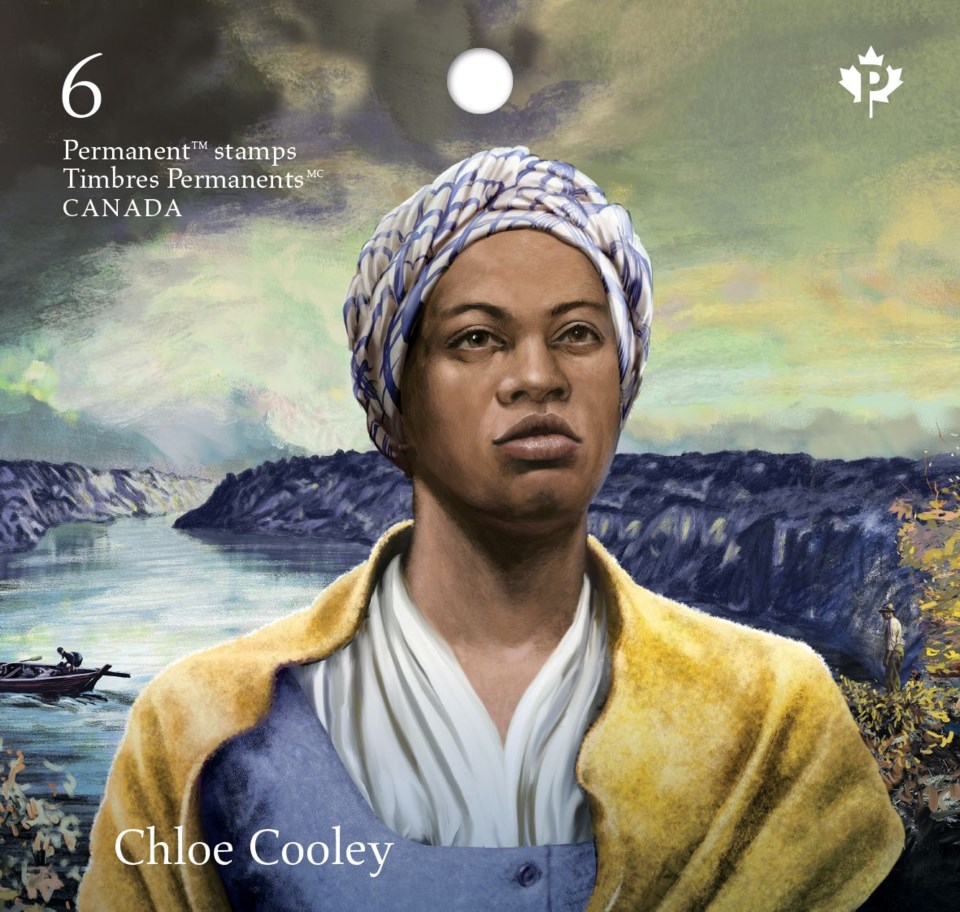The following article was written by Terry Fegarty, of the Tay Heritage Committee and Community Heritage Ontario, with editing assistance by Heritage Grey Highlands member Nancy Matthews.
February is Black History Month in the U.S., Canada (since 1996) and several other countries.
The annual national campaign here encourages all Canadians to learn more about Black history in Canada and to remember the incredible influence that Black people have left – and continue to leave – on the cultural fabric of our country.
The theme for this year’s campaign is “Black Resistance.” In recognition of Black History Month, Canada Post has issued a commemorative stamp featuring Chloe Cooley.
For some background, the sinister side of early Black North American history is, of course, slavery, a practice known from all recorded history.
We Canadians tend to be very proud of our involvement in helping refugees from slavery but seem far less aware that slavery was commonly practised in the Canadian colonies for some 200 years prior to its abolition in 1833.
Both the French and British Empires legalized, or at least condoned slavery, of both Black and Indigenous peoples, as essential to develop their colonial economies.
Slaves were treated as commodities, to be bought, sold, and bequeathed in one’s will.
Slavery here was not extensive. It was of little use in the fur trade and small farmers could not afford them, so the relatively few slaves here were mostly household servants for the upper classes.
In the 1790’s, there were: 2,500 enslaved Black people in the Maritimes, 300 in Lower Canada (now Québec), 500 to 700 in Upper Canada (now Ontario).
Many had been brought here by United Empire Loyalists immigrating to Canada from the south after the American Revolution.
Chloe Cooley was one of the Black women enslaved in Upper Canada by this time. She is one of only a few known to history, although she was likely brought to Upper Canada by a Loyalist.
Sometime before 1793, Cooley was sold to one Sergeant Adam Vrooman — a fellow Loyalist living near Queenston on the Niagara River.
On the 14th of March 1793, Vrooman and two other men violently tied up Cooley, put her in a boat and transported her across the Niagara River to sell her in New York State.
Cooley resisted fiercely, but to no avail. At this point, her story is lost.
This incident was reported to Lieutenant-Governor John Graves Simcoe, an abolitionist sympathizer, and other government leaders.
As a result, Simcoe introduced the 1793 Act to Limit Slavery in Upper Canada.
This law banned future importation of slaves into the province, and freed slave children at the age of 25. But it did not free any presently enslaved persons, nor outlaw the sale of slaves. It would not have protected Chloe Cooley.
With slaveholders in and out of Parliament opposed to further restrictions, it was another 40 years before the abolition of slavery, in the Canadian colonies and throughout the British Empire.
For her courageous act of resistance, Chloe Cooley was designated a Person of National Historic Significance by the Government of Canada in 2022.
A “Heritage Minute” dramatizing the events of March 14, 1793, may be viewed here.



